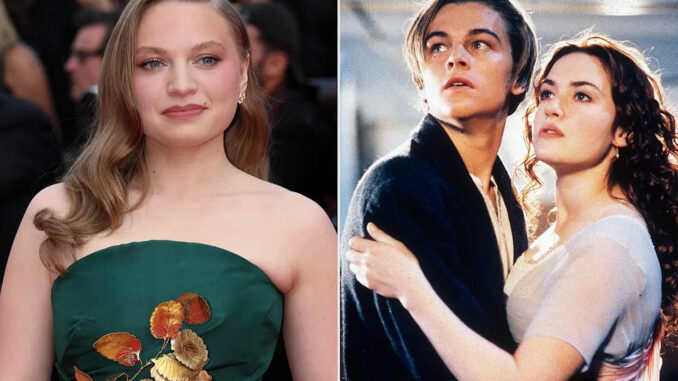
The screen glowed, a blue-tinged iceberg in the darkened room, its light reflecting in a mother's anxious eyes. The scene unfolded, iconic and intimate, a cinematic landmark etched into the cultural consciousness. Then, the inevitable: a mother's hand, swift and decisive, covered a child's eyes. This wasn't just any mother, any child, or any movie. This was Kate Winslet, her daughter Mia, and Titanic's famous steamy interlude. And years later, the daughter's quiet revelation – "I can still hear everything" – unfurls a poignant, illustrative tale about the futility of partial protection, the enduring power of sensory memory, and the unique labyrinth of growing up in a famous parent's shadow.
The act itself is a universal parental instinct: to shield. To preserve innocence, even for a fleeting moment, from the potentially jarring realities of the adult world. For Kate Winslet, watching herself, an Oscar-nominated actress, portray passion on screen with another man, while her own flesh and blood sat beside her, must have been a uniquely disorienting experience. Her hand, a loving curtain drawn against a visual tableau, was an attempt to maintain the delicate illusion of childhood purity, to offer a buffer against a scene not yet meant for young eyes. It was a gesture of love, control, and perhaps a touch of personal embarrassment, a mother grappling with the blurring lines between her public persona and her private role.
Yet, Mia's gentle rejoinder, "I can still hear everything," slices through the well-intentioned censorship with the sharp, unvarnished truth of a child's perception. The eyes may have been veiled, but the ears, those ever-vigilant sentinels of the soundscape, were wide open. What did she hear? The swelling score, no doubt, the crescendo of James Horner's masterful music. Perhaps the hushed whispers of dialogue, the ragged breaths, the rustle of fabric, the creak of the carriage, the rain-slicked sounds of the ship. The absence of sight, far from erasing the moment, might have amplified the auditory experience, allowing it to permeate Mia's imagination with a potency that pure visuals alone might not have achieved. The mind, starved of direct imagery, becomes a more active participant, painting its own vivid, unedited pictures based on the available sensory input.
This incident beautifully illustrates the inherent limitations of controlling a child's understanding of the world. While we can filter what they see, we cannot always filter what they hear, feel, or, crucially, imagine. The memory of that scene for young Mia would have been a unique blend – a visual void filled by an auditory narrative, made all the more memorable by the very act of maternal intervention. The covering of the eyes, rather than diminishing the moment, likely underscored its significance, marking it as something important, something slightly forbidden, something that required special handling. It became an event in itself, not just a scene in a movie.
Furthermore, Mia's recalling this specific detail years later speaks volumes about the enduring nature of sensory memory, particularly those tinged with a unique emotional or contextual framing. It wasn't just a scene; it was "Mom covering my eyes." This small, intimate act transformed a generic cinematic moment into a deeply personal, shared memory between mother and daughter. It became a family anecdote, a quirky relic of childhood, a testament to the awkward, endearing dance of parenting in the spotlight.
In the end, Kate Winslet's hand over her daughter's eyes and Mia's subsequent revelation transcend a simple celebrity anecdote. It’s a microcosm of the larger human experience of protection and perception. It reminds us that children are not passive recipients of our curated realities; they are active interpreters, their senses collaborating to construct a world that is uniquely theirs. The world, like a film, plays on, even when we try to pause or censor a frame. And often, it's the unseen, the unheard, the subtly perceived details that resonate most deeply, etching themselves into the fabric of memory with an unforgettable clarity. For Mia, the silence imposed on her sight only amplified the symphony of suggestion, creating a memory as indelible as any visual.
